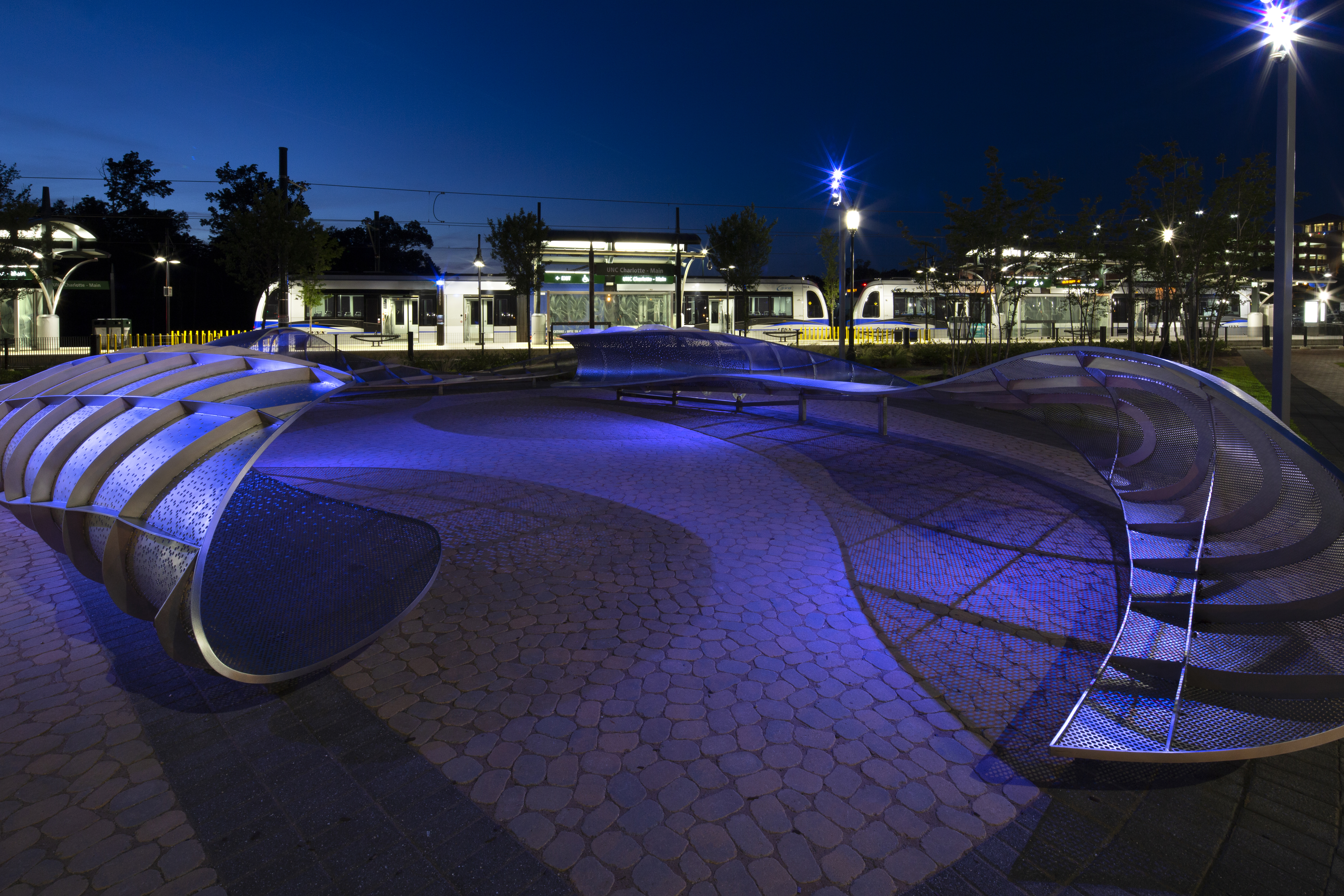
UNC Charlotte Main
Mikyoung Kim, The Nexus Project
2018
Kim’s art is in the spirit of university learning and flux. Her 100’ of undulating, perforated stainless steel sculptural seating is surrounded by motion activated colored lighting, altering the landscaped plaza where people await the trains. Her art glass and metal columns on the platform expand her time concept within the station environment.
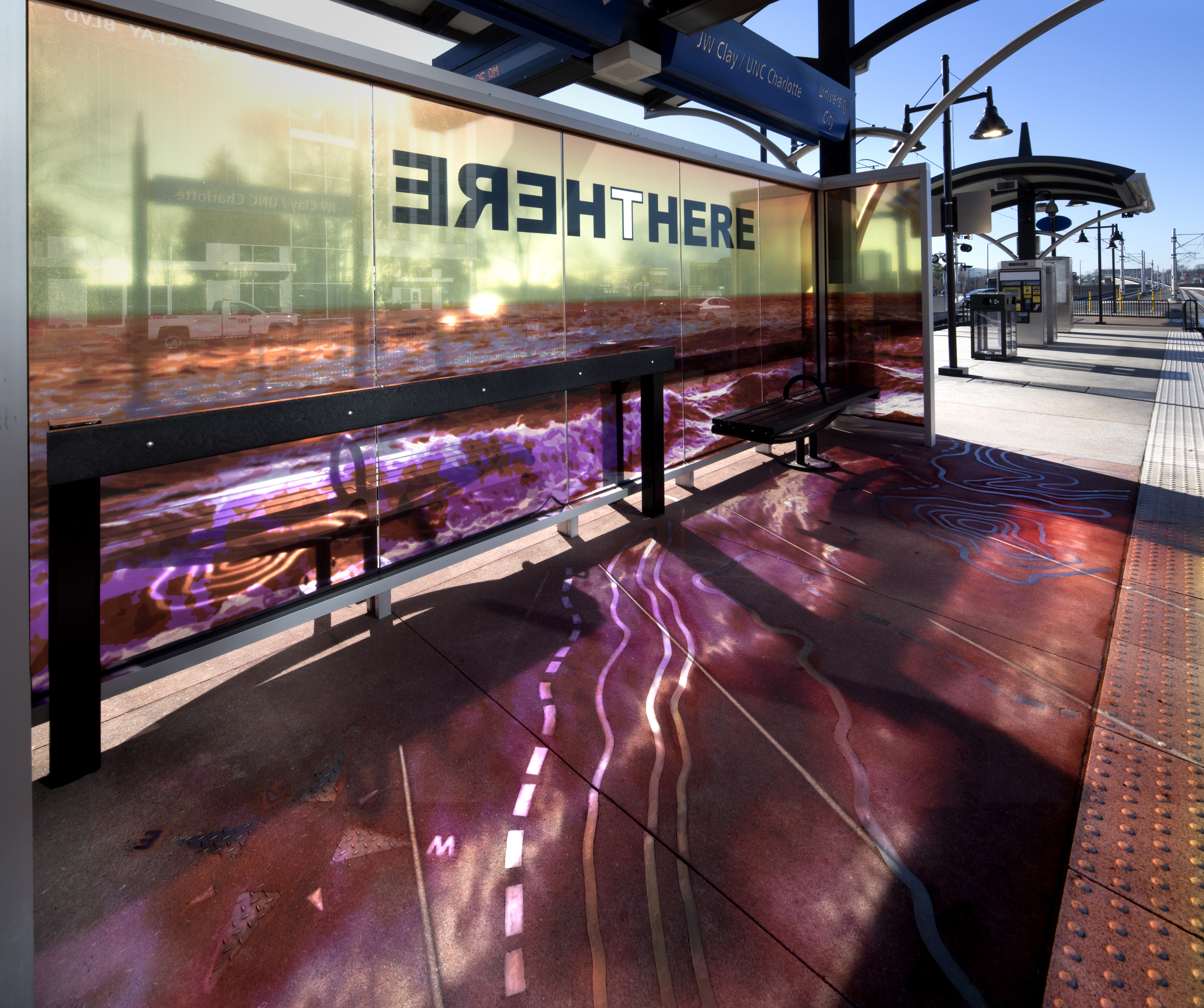
JW Clay Blvd.
Jackie Chang, (T)HERE
2018
Chang’s art was influenced by the station and boulevard’s namesake, James W. Clay, a geographer, traveler, and urban planner. Blending text and images in her art, she incorporates the words “HERE” and “THERE”. For the artist, HERE signifies one’s current location and THERE indicates the horizon. Chang creates this distinction by inlaying the word HERE into the platform and depicting in the glass windscreen THERE - which contains “HERE” - above the horizon lines of three recognizable North Carolina landscapes: the Piedmont, the Blue Ridge Mountains, and the Atlantic coastline.
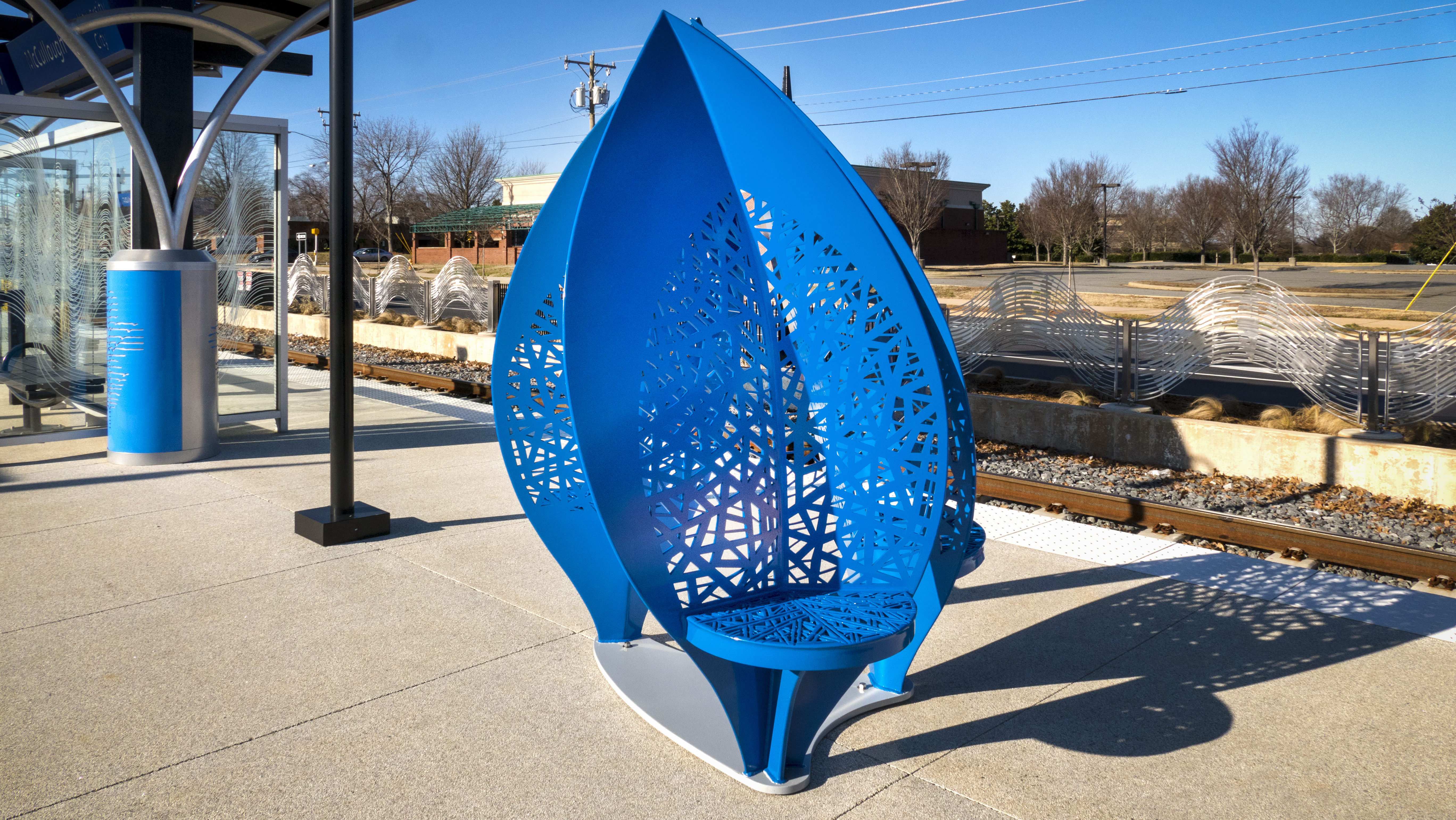
McCullough
Shaun Cassidy, Ebb and Flow
2018
Cassidy expands upon his leaf motif found in the southern corridor art with natural elements. Etched windscreens, canopy columns, two Leaf Shadow Benches and flowing stainless steel art fencing were designed by the artist. Cassidy also designed bus shelter windscreen glass.
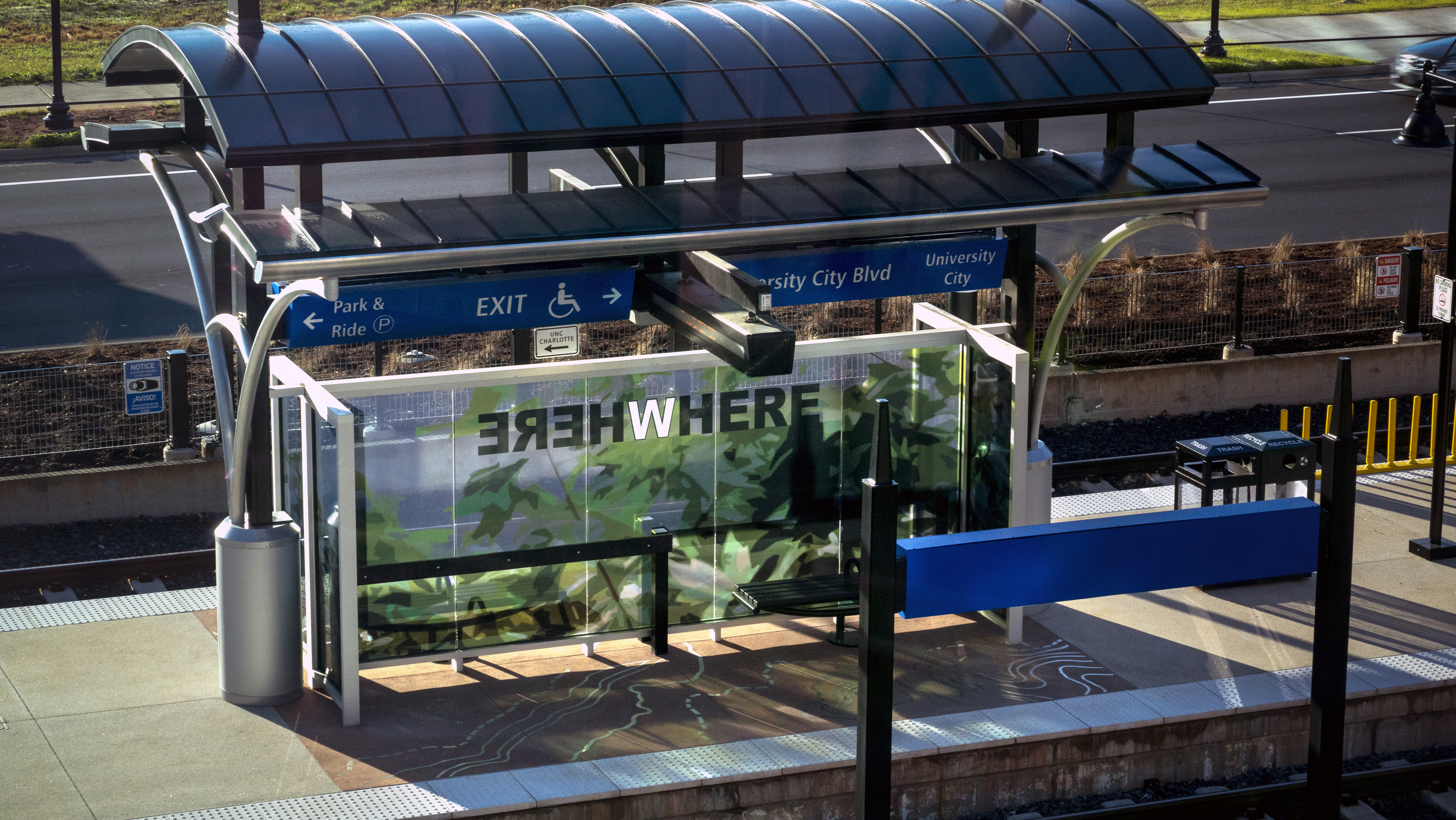
University City Blvd.
Jackie Chang, (W)HERE
2018
Chang blends text and foliage imagery in her station art by
incorporating the words “HERE” and “WHERE”. HERE, embed in the clay-colored concrete underfoot, signifies one’s current location; and WHERE, found at eye-level in the art glass windscreens, is an abstract term, belonging both to the past and to the future. Chang said in an interview, “Charlotte is looking to the future, but it is also taking the past with it.”
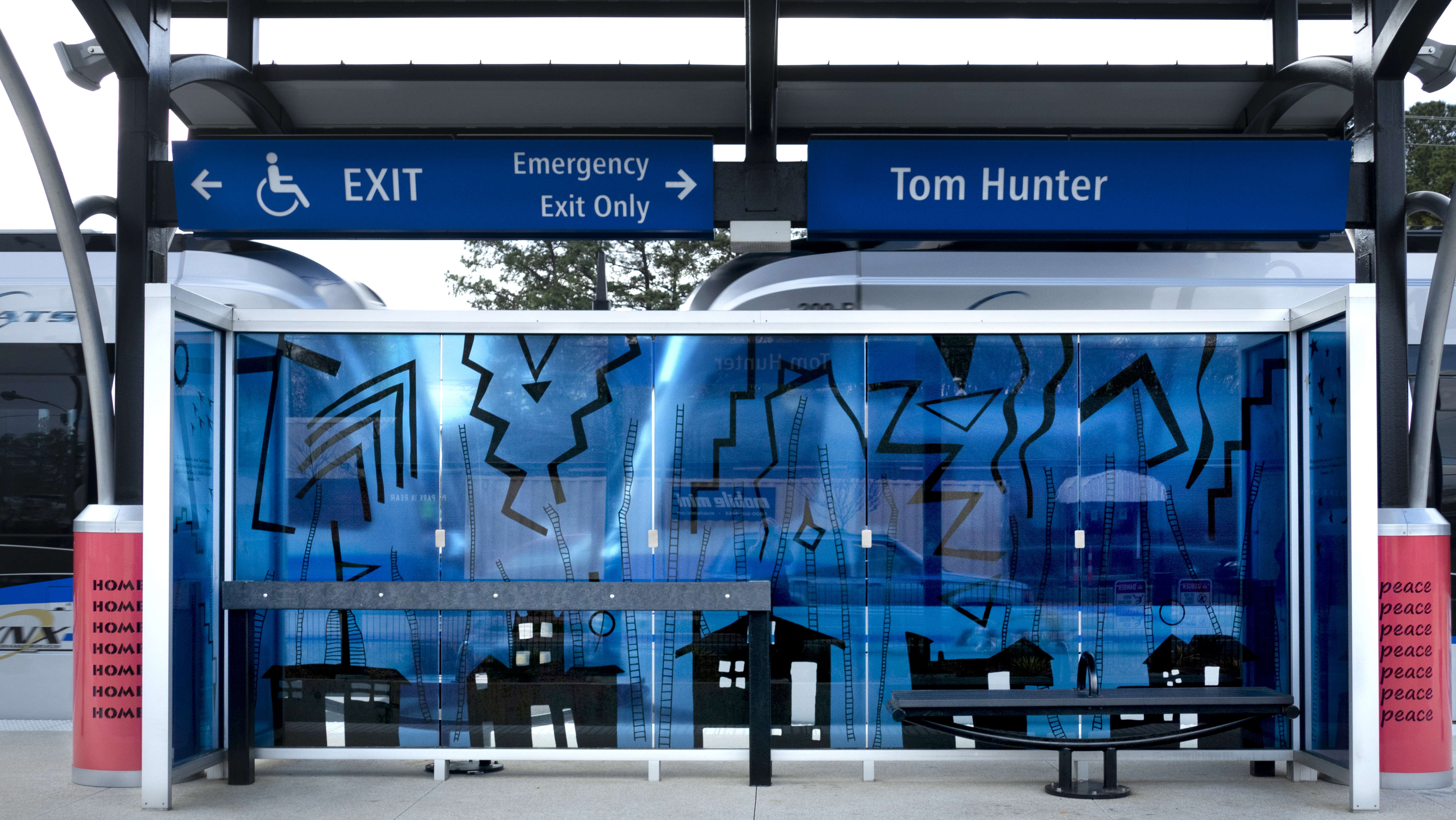 Tom Hunter
Tom Hunter
Tom Stanley, A Place Called Home
2018
Stanley’s art is a result of his interaction with Martin Luther King Jr. Middle School and Hidden Valley Elementary students and their concepts of ‘‘home.’’ The artist utilized the students’ drawings and words in his windscreen glass and canopy columns along with his own aesthetic interpretations. His art fencing and two art benches reference pyramidal house tops. More info can be found in the video here.
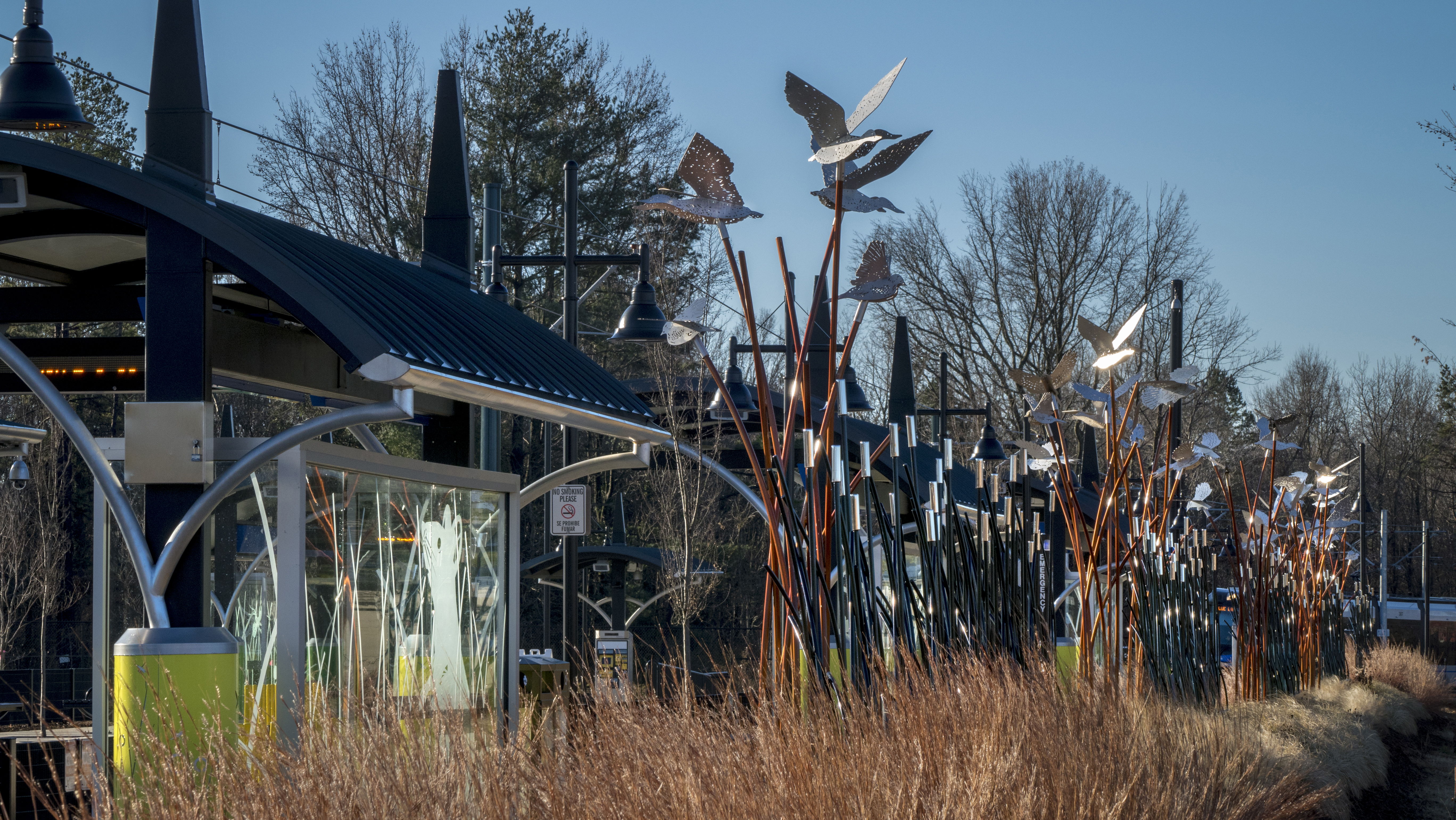
Old Concord Road
Chandra Cox, Nature’s Sanctuary
2018
The woodland bird habitat neighboring the station at Eastway Park influenced Cox’s station art, including a 250’ Birds & Cattail Fence set in a berm of ornamental grasses and flowers. Native critters become large in the etched windscreen glass and tiny in the canopy columns.
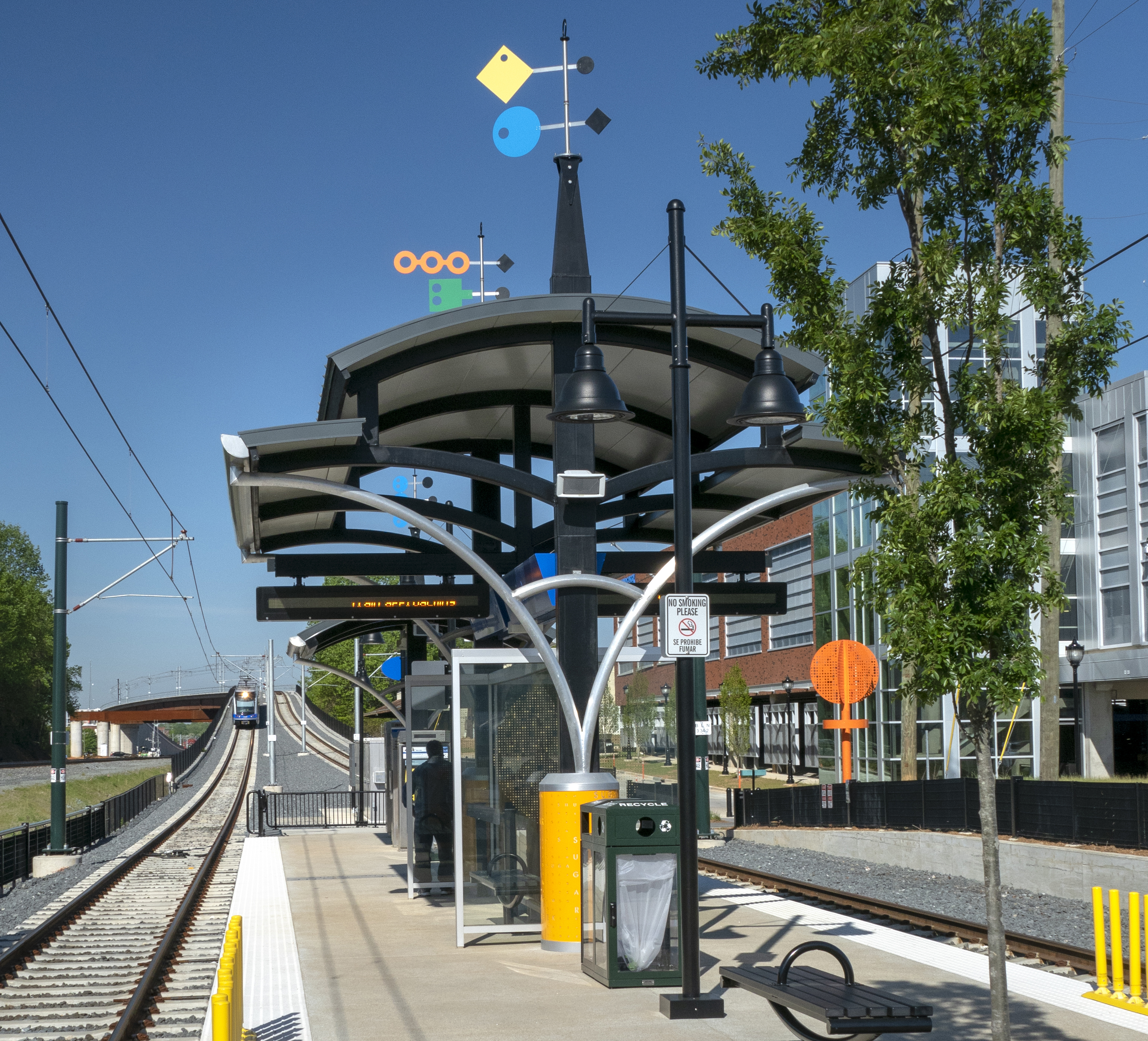
Sugar Creek
Chandra Cox, Locomotion
2018
Influenced by freight train activity parallel to the light rail station, Cox references heavy rail through her kinetic finials atop the canopies and locomotive imagery in her windscreen glass. In the canopy metal column cladding she uses the historic spellings of Sugar Creek. Her 18’ high Orb Lantern sculpture is inspired by a train switch and sited between the station platform and parking garage.
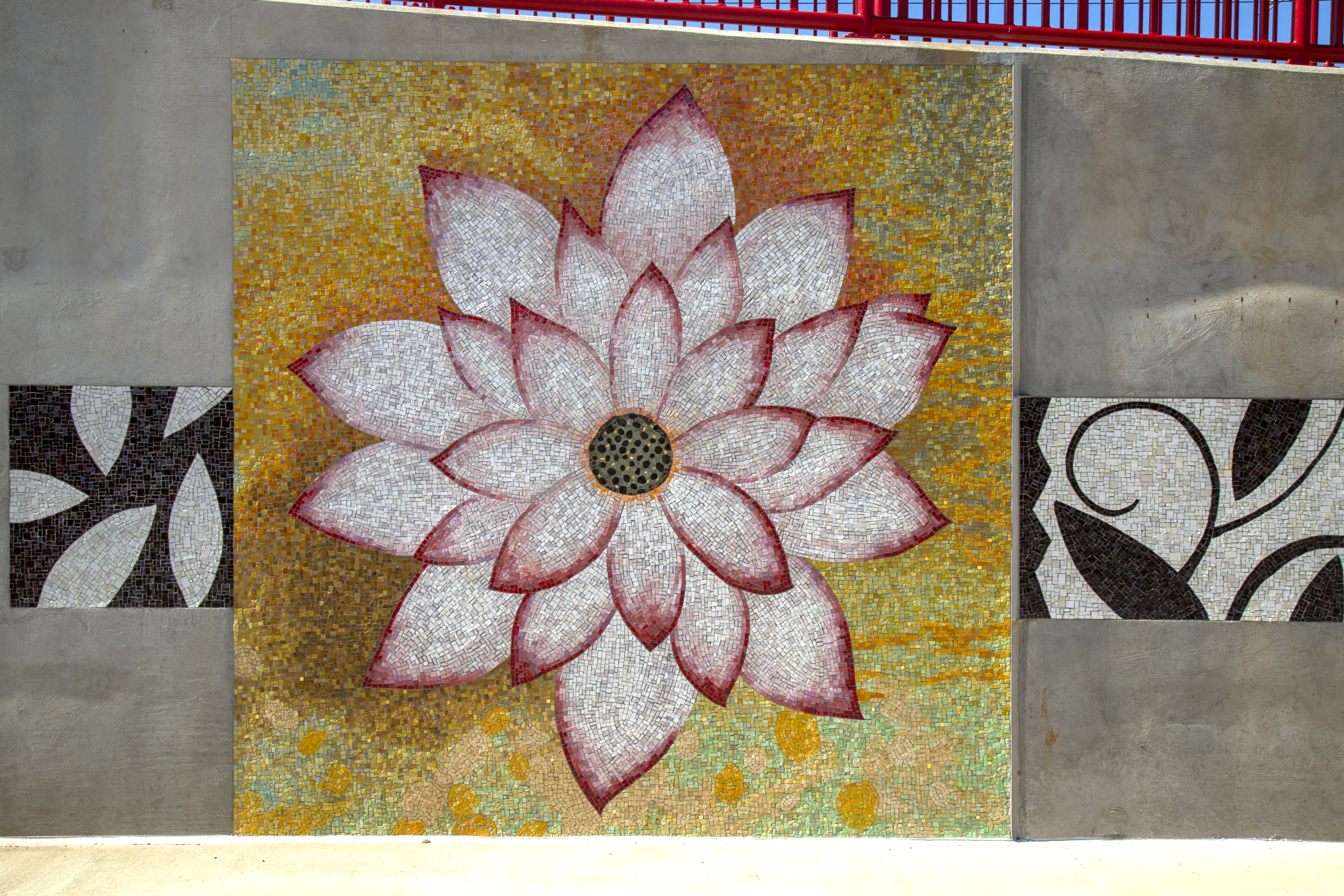
36th Street
Ruth Ava Lyons & Paul Sires, Welcome to Nodaland
2018
Red is the artists chosen signature color for the station’s metal work, including the canopy steel, light poles, and fencing to signify the eclectic NoDA neighborhood, which they were instrumental in contributing to. Their art recognizes the area’s growth with industrial and organic imagery in the canopy windscreen glass, metal column cladding, and smalti glass mosaics set in the wall approaching the platform. Sires’ carved granite bench is sited at street level.
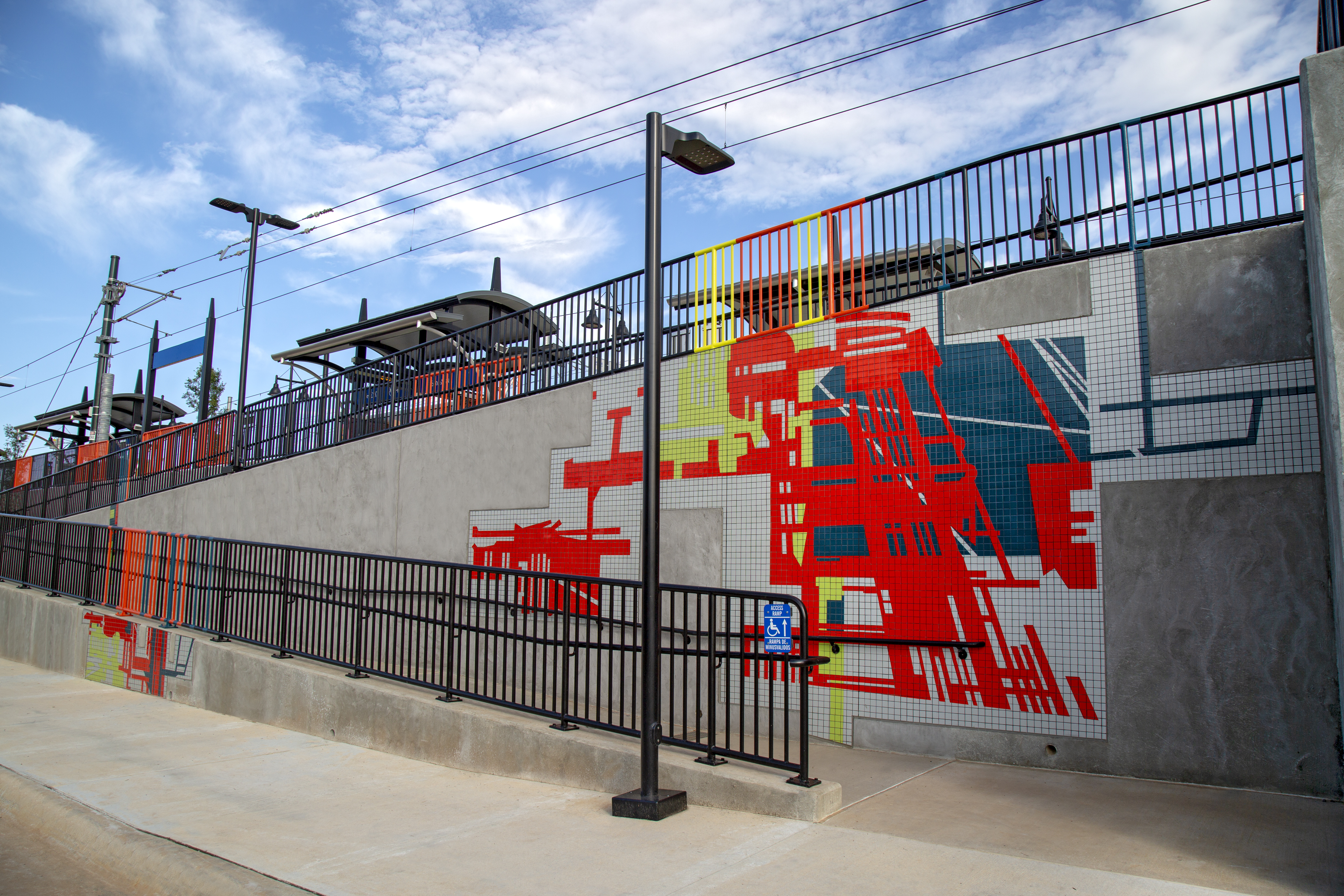
25th Street
Sharon Dowell, A City of Optimists
2018
Dowell’s painting style is utilized in the canopy windscreen glass art and column cladding art. Ten mosaics and color added to standard benches and railing captures her color palette. Her art includes silhouettes of Charlotte residents, and she strives to incorporate the ‘‘City’s energy.’’ Beyond the station, underpasses at 11th St and I-277 along with a Signal House include Dowell’s color rich murals.
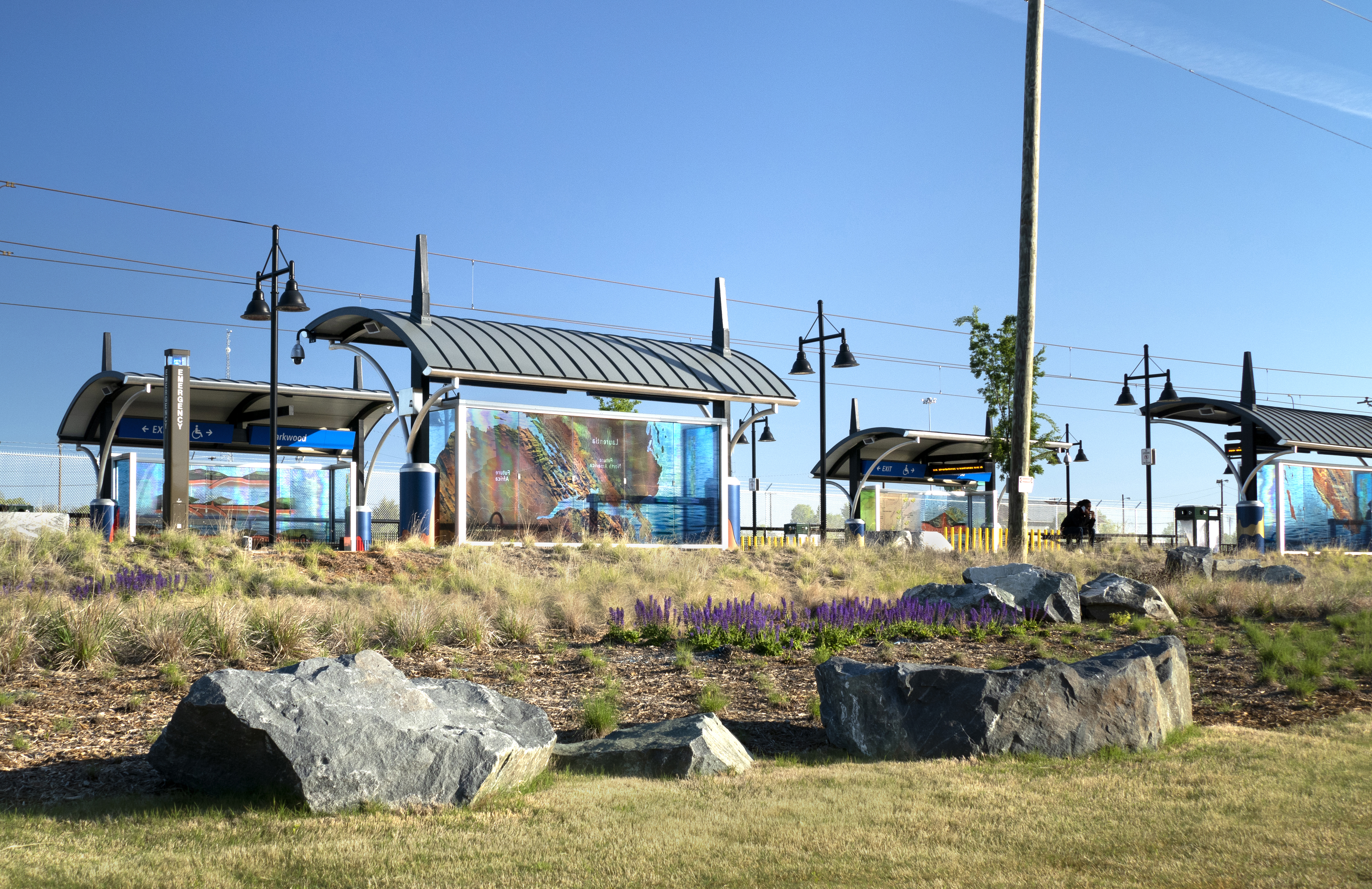
Parkwood
Maria Artemis, Tectonic Suite
2018
Artemis’ art explores the geological events that shaped Charlotte. Her windscreen glass and canopy columns include maps of the Carolinas, and the platform is stamped with fossil shaped arcs and colored glass aggregate. The artist chose 30 boulders for the adjacent landscape illustrating the slate and granite belts adjacent to Charlotte and responsible for the region’s gold formation. She also replaced 4 standard benches with hand carved granite seating.
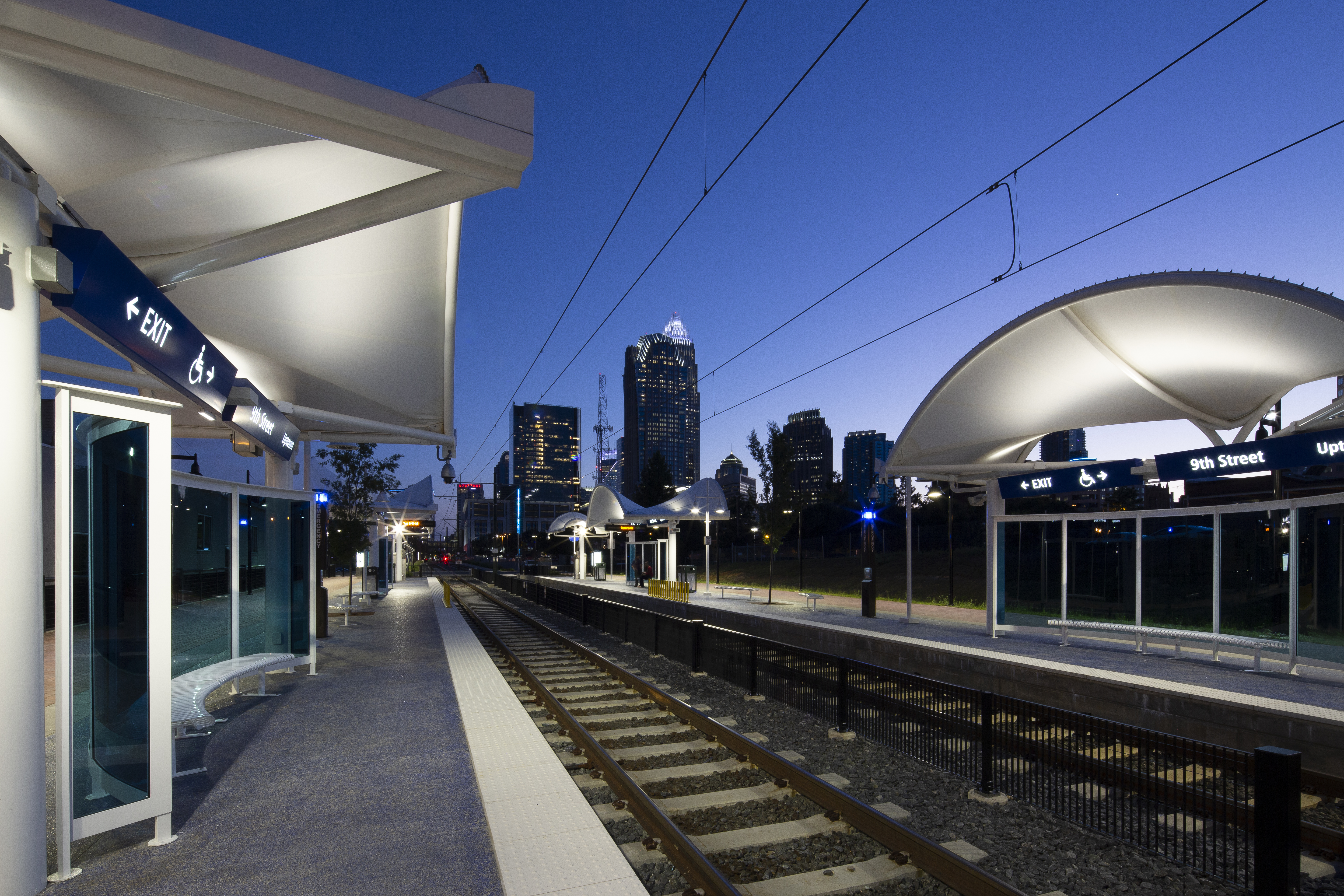 9th Street
9th Street
Anna Valentina Murch & Douglas Hollis, UMBRA
2018
Charlotte’s historic textile industry and the environmental benefits of alternative transportation options drove the signature station design by artists Anna Valentina Murch (1949 - 2014) and Douglas Hollis. The use of a tensioned membrane for the ten shelters was forward thinking and a demonstration of technological advancements in the industry. Each component chosen by the artists is in response to environmental conditions, qualities of light, and movement – both of trains and people. The fanning canopies, curved benches and blue glass windscreens, platform of blue glass aggregate all flow together to create a collectively airy, uplifting experience for riders.